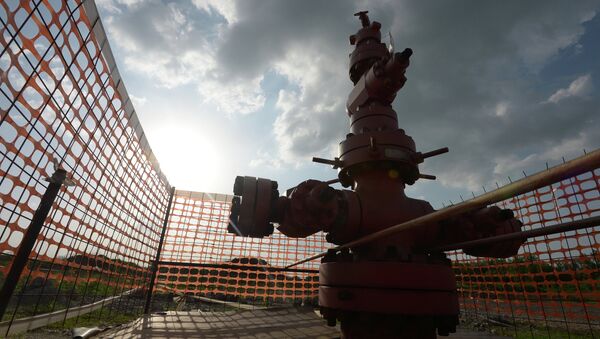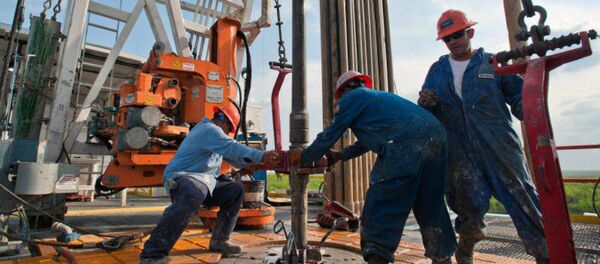WASHINGTON (Sputnik) — On June 18, 2015, Bloomberg reported that 27 of the 67 drillers listed in its North America Independent Exploration and Production Index have lost more than ten percent of their revenue to interest payments.
Moreover, the debt of the drilling companies reached $235 billion as oil prices fell 43 percent during the past year, according to the Bloomberg report.
“The risk is much higher for the bankers when the price of oil is low to be extending credit into weaker drilling companies, so the bankers won’t want to be extending [it],” Johns Hopkins University Applied Economics Professor Steve Hanke said on Wednesday.
“Those weaker companies will shrivel off and maybe some of them will go bankrupt,” Hanke added.
Ball State University Economics Professor Cecil Bohanon argued that US energy development has long relied on leveraging of assets to expand firms during an energy boom.
“When prices collapse, bankruptcy ensues,” Bohanon said. “This is why oil or gas development are and will always be a speculative venture.”
However, a good percentage of shale drilling firms in the United States still have well-hedged positions, according to Texas A&M University Clinical Associate Professor Detlef Hallermann.
Hallermann noted for most of 2015, the shale drilling companies are hedged on average at $80-90 per barrel of oil, and can survive and pay off some of their debt without incurring hardship.
Experts agreed that economically average and strong drilling companies will manage the price fluctuations and stay out of bankruptcy. However, the market might see a number of mergers of strong and weak companies.
“You will see some of [bankruptcies], but… I think more companies will be enquired or will restructure their balance sheet, and some of their debt will be converted into equity,” Hallermann said.
Hanke added that the companies’ assets will go to “stronger hands as a result of the consolidation,” and will remain in the industry.
On June 9, 2015, the US Energy Information Administration said total US crude oil production averaged at 9.6 million barrels a day in May. However, the agency said it expects a decline in production from June 2015 through early 2016.



